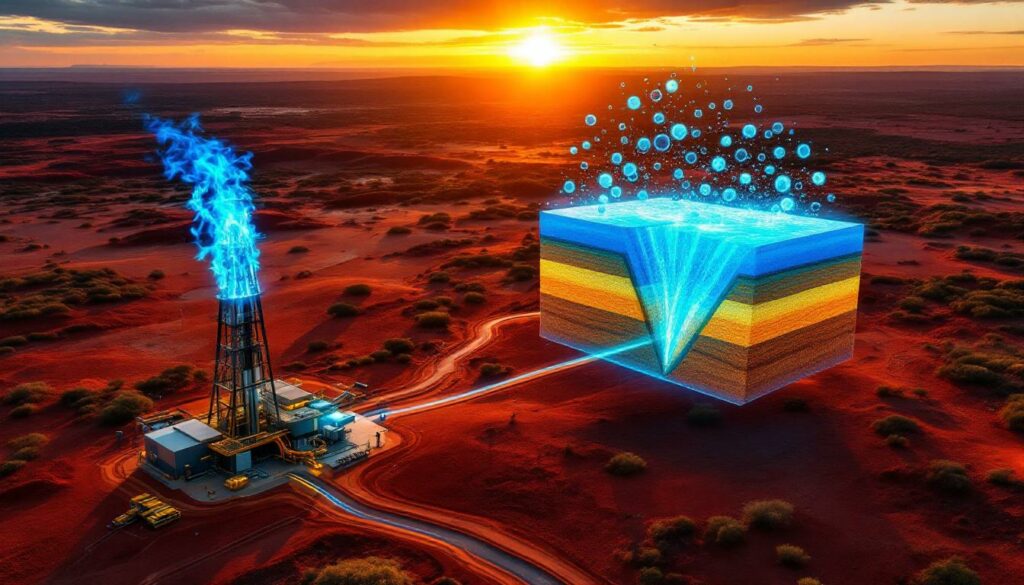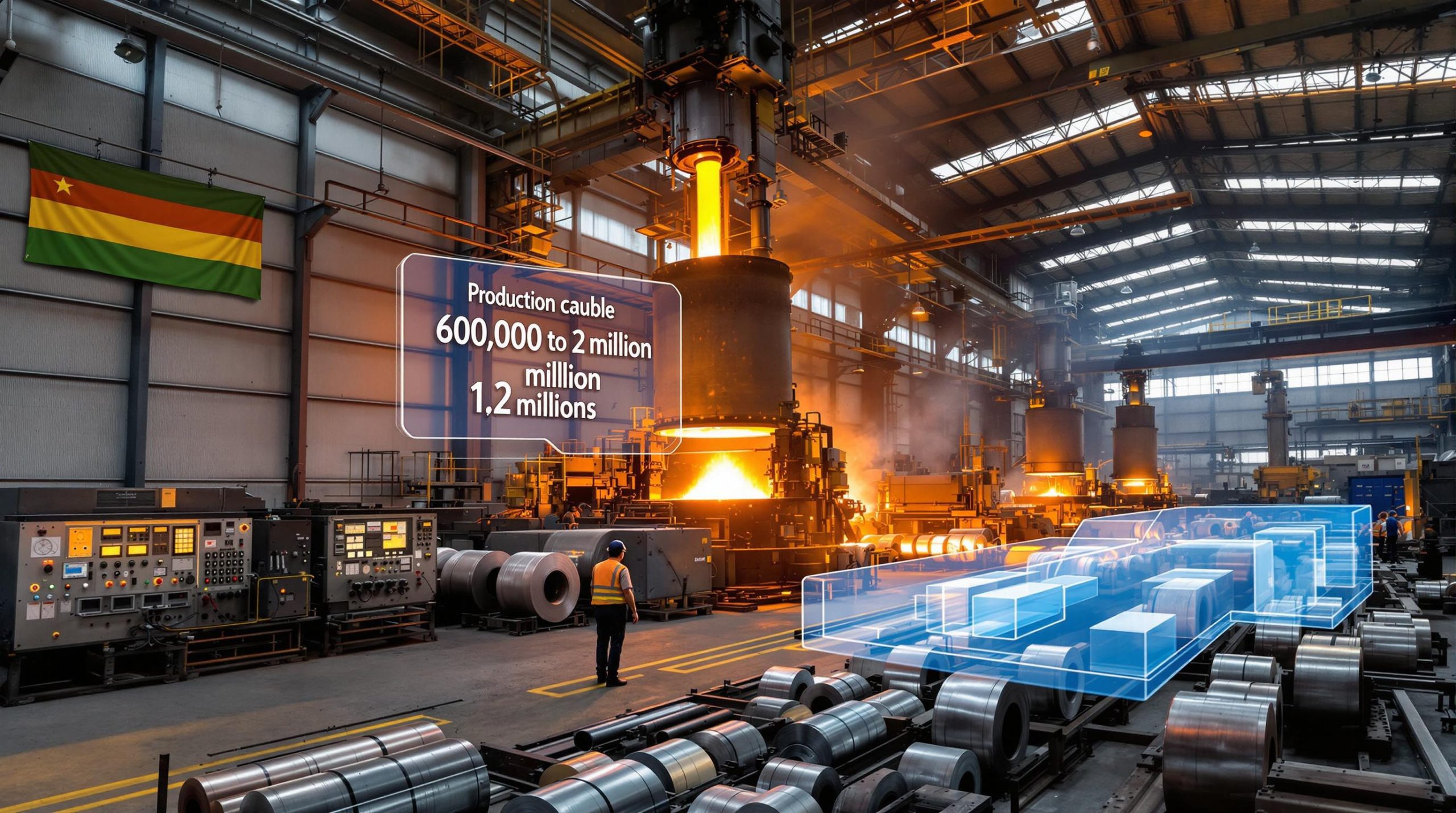Understanding the Beetaloo Basin: Australia's Next Energy Frontier
The Beetaloo Basin represents one of Australia's most promising unconventional gas resources, located approximately 500 kilometers southeast of Darwin in the Northern Territory. This vast geological formation, spanning roughly 28,000 square kilometers, has gained significant attention for its potential to transform Australia's energy landscape through substantial natural gas reserves comparable to major North American shale plays.
Geological Formation and Strategic Importance
The Beetaloo Basin formed approximately 1.4 billion years ago as part of the greater McArthur Basin. What makes this formation particularly valuable is the Mid Velkerri B Shale—a gas-rich layer located approximately 2,000-2,500 meters below the surface. Geologists have identified remarkable similarities between this formation and the prolific Marcellus Shale in the United States, which has transformed American energy production over the past two decades.
The strategic location of the Beetaloo Basin offers dual advantages for future development. Its proximity to Darwin provides potential access to export markets through existing and planned LNG facilities, while pipeline infrastructure could deliver gas to Australia's East Coast markets where demand remains strong and prices typically command a premium over international benchmarks.
"The Beetaloo Basin represents a potential game-changer for Australian energy security outlook, with initial assessments suggesting gas resources sufficient to meet domestic demand for decades," notes Dr. Alan Finkel, former Chief Scientist of Australia.
Economic Significance for Australia's Energy Landscape
The Australian Competition and Consumer Commission (ACCC) has projected potential gas shortfalls for the East Coast market as early as 2027, making the Beetaloo Basin's development increasingly important for national energy security. The basin's estimated resources could potentially:
- Supply up to 20% of East Coast gas demand by 2030
- Support thousands of direct and indirect jobs in the Northern Territory
- Generate billions in tax revenue over the project lifetime
- Provide feedstock for manufacturing industries currently struggling with high energy costs
Tamboran Resources' Record-Breaking Gas Discovery
Tamboran Resources Corporation (ASX: TBN) has achieved a significant breakthrough in the Beetaloo Basin with record-setting flow rates that validate the commercial potential of this frontier resource. The company's systematic approach to applying North American shale development techniques has yielded impressive results that position the Beetaloo Basin as a potential world-class gas resource.
The SS-2H ST1 Well: A Technical Achievement
On June 16, 2025, Tamboran announced that its Shenandoah South 2H sidetrack (SS-2H ST1) well achieved an average 30-day initial production (IP30) rate of 7.2 million cubic feet per day (MMcf/d)—the highest recorded flow rate in the Beetaloo Basin to date. This achievement is particularly noteworthy given the following technical specifications:
- Lateral Length: 1,671-meter (5,483-foot) stimulated section
- Completion Design: 35-stage hydraulic fracturing design
- Wellhead Pressure: Stabilized at approximately 906 psi
- Exit Rate: 6.7 MMcf/d after 30 days of production
- Cumulative Production: 217.2 MMcf of gas during the test period
- Water Recovery: 21,689 barrels during flowback and testing
When normalized to a 10,000-foot lateral (the industry standard for comparing well performance), the SS-2H ST1 flow rate equates to 13.2 MMcf/d—a figure that compares favorably with established North American shale plays.
Joel Riddle, CEO of Tamboran Resources, emphasized the significance of these results: "The SS-2H ST1 well demonstrates a material step up in flow rate from a horizontal section stimulated approximately three times longer than our previous SS-1H well. This achievement confirms our view that the Mid Velkerri B Shale will respond similarly to North American shale formations when applying proven drilling programs insight."
Progressive Improvement Through Technical Innovation
Tamboran's success represents the culmination of progressive technical improvements across multiple wells in the Beetaloo Basin:
| Well Name | Lateral Length (ft) | Fracture Stages | IP30 Flow Rate (MMcf/d) | Normalized Rate (MMcf/d per 10,000 ft) | Exit Rate (MMcf/d) |
|---|---|---|---|---|---|
| SS-2H ST1 | 5,483 | 35 | 7.2 | 13.2 | 6.7 |
| SS-1H | ~1,800 | 10 | 2.2 | 12.2 | ~2.0 |
| T3H | ~2,500 | 10+ | ~1.5 | ~6.0 | ~1.3 |
This progression clearly demonstrates that longer lateral sections with higher-intensity stimulation yield proportionally greater gas production—a key principle that has driven the economic success of North American shale development. The threefold increase in lateral length from SS-1H to SS-2H ST1 resulted in more than triple the absolute flow rate, validating Tamboran's development approach.
Beetaloo Basin vs. Marcellus Shale: A Compelling Comparison
The Marcellus Shale stands as the most productive natural gas field in the United States, currently producing approximately 35 billion cubic feet per day—about 40% of U.S. shale gas production. Tamboran's achievement in the Beetaloo Basin takes on greater significance when benchmarked against this prolific formation.
Performance Benchmarking Against a Global Leader
Independent reservoir analysis indicates that the SS-2H ST1 well performance aligns closely with average results from more than 11,000 Marcellus Shale dry gas wells. Specifically:
- The normalized flow rate of 13.2 MMcf/d per 10,000 feet falls within the average range for Marcellus wells
- Decline characteristics show less than 10% reduction after 30 days, mirroring typical Marcellus performance
- Gas composition analysis reveals similar methane content (>90%) and low CO2 concentrations
- Reservoir pressure and temperature gradients demonstrate comparable conditions
Dr. Terry Engelder, Professor Emeritus of Geosciences at Penn State University and an early pioneer in Marcellus Shale assessment, notes: "The geological similarities between the Mid Velkerri B Shale and the Marcellus are striking, particularly in terms of organic content, thermal maturity, and brittleness—key factors that determine a formation's response to hydraulic stimulation."
Geological Similarities Driving Performance
The Mid Velkerri B Shale shares several critical characteristics with the Marcellus:
- Total Organic Carbon (TOC): 2-6% range, sufficient to generate substantial gas volumes
- Thermal Maturity: Within the dry gas window, resulting in predominantly methane production
- Mineralogy: High silica content (>40%) creating the brittleness necessary for effective fracturing
- Thickness: Consistent 40-60 meter pay zone across the basin
- Overpressure: Approximately 0.55-0.65 psi/ft, enhancing flow potential
These geological similarities explain why North American completion techniques have proven effective in the Beetaloo Basin and suggest that longer-term production profiles may follow similar patterns to those observed in the Marcellus over the past decade.
Advanced Drilling and Completion Techniques Unlocking Beetaloo's Potential
Tamboran Resources has systematically applied lessons from two decades of North American shale development to the Beetaloo Basin, adapting proven techniques to the specific geological conditions of the Mid Velkerri B Shale.
Horizontal Drilling Innovations
The company's drilling program has evolved significantly with each successive well:
- Extended Reach: Progression from initial ~2,000-foot laterals to 5,483 feet in SS-2H ST1
- Target Depth Control: Maintaining precise positioning within the most productive zones of the Mid Velkerri B
- Drilling Efficiency: Reduced drilling days and costs through optimized mud systems and bit selection
- Directional Control: Achieving >95% lateral placement within the target zone
Tamboran has announced plans to further extend lateral lengths to 10,000 feet in future wells—a standard practice in mature North American basins that typically delivers proportional increases in production while reducing per-unit development costs.
High-Intensity Completion Designs
The company's completion strategy has similarly evolved to unlock maximum productivity:
- Stage Density: Increased from 10 stages in early wells to 35 stages in SS-2H ST1 (approximately one stage per 150 feet)
- Proppant Loading: Optimized at approximately 2,000 pounds per foot to maintain fracture conductivity
- Fluid Systems: Customized slickwater designs adapted to the specific properties of the Mid Velkerri B Shale
- Perforation Strategy: Engineered cluster spacing to maximize reservoir contact
"The progression to higher-intensity completions has been methodical and data-driven," explains Joel Riddle. "Each well provides valuable information that allows us to refine our approach, and we're seeing clear evidence that the Mid Velkerri B responds favorably to completion techniques that have proven successful in North America."
Industry analysts note that these technical approaches have reduced drilling and completion costs by approximately 15-20% from initial wells while simultaneously improving productivity—a trend that mirrors the efficiency gains observed in the Marcellus and other U.S. basins as they matured.
Tamboran's Development Timeline for Commercial Production
With the technical validation provided by the SS-2H ST1 results, Tamboran has outlined a clear pathway to commercial gas production from the Beetaloo Basin, centered around a focused development program starting in 2025.
2025 Development Campaign
Tamboran's next phase of development is scheduled to commence in July 2025, featuring:
- Drilling of up to three new 10,000-foot horizontal wells targeting the Mid Velkerri B Shale
- Completion of the SS-3H well by year-end 2025 using an optimized 70+ stage fracturing design
- Remaining wells to be completed in the first half of 2026
- Implementation of pad drilling to reduce surface footprint and improve operational efficiency
This drilling program will incorporate lessons learned from the SS-2H ST1 well while scaling up both lateral length and completion intensity to further enhance productivity. The company anticipates that these extended laterals could potentially deliver flow rates exceeding 15 MMcf/d per well, based on the normalized performance of SS-2H ST1.
Infrastructure Development for First Gas Sales
In parallel with the drilling program, Tamboran is advancing the development of critical infrastructure required for commercial gas sales:
- Sturt Plateau Compression Facility (SPCF): A central processing facility designed with initial capacity of 40 MMcf/d
- Gathering System: Low-pressure pipeline network connecting wellpads to the SPCF
- Sales Pipeline: Connection to existing Northern Territory gas transmission infrastructure
- Water Management: Closed-loop system for flowback and produced water handling and recycling
"The infrastructure design incorporates flexibility for expansion as additional wells come online," notes Tamboran's Chief Operating Officer. "We've structured the development to allow for modular growth while minimising initial capital requirements."
The company has secured a gas sales agreement with the Northern Territory Government that underpins the initial development phase, with first commercial gas sales targeted for mid-2026. This agreement includes CPI-linked pricing that provides revenue stability while maintaining exposure to market upside.
Tamboran's Strategic Position in the Beetaloo Basin
Tamboran Resources Corporation has established itself as the dominant player in the Beetaloo Basin through strategic acquisitions and joint venture agreements that have significantly expanded its acreage position and operational control.
Acreage Expansion and Working Interest
Following Falcon Oil & Gas Australia's decision not to participate in the Phase 2 development program, Tamboran has increased its working interest to:
- 58.12% interest in the Phase 2 development area
- 77.5% interest across the former EP 76, 98, and 117 tenements
- Operatorship across all key development areas
This expanded position makes Tamboran the largest acreage holder in the basin, with approximately 4.5 million acres (18,000 square kilometers) under control. The company's contiguous acreage position allows for efficient development planning and infrastructure optimization.
Strategic Partnerships Enhancing Development Potential
Tamboran has formed strategic partnerships to accelerate basin development:
- Daly Waters Energy: Joint development agreement for key acreage blocks, as reported in Tamboran's recent announcement
- Northern Territory Government: Long-term gas sales agreement underpinning initial production
- Indigenous Land Councils: Comprehensive land use agreements with traditional owners
These partnerships provide Tamboran with the social license, market access, and collaborative framework necessary for successful development in a frontier basin. The company has indicated that it remains open to additional strategic partnerships that could further accelerate development timelines or provide specialized technical expertise.
Commercial Implications of Beetaloo Basin Development
The successful development of the Beetaloo Basin could have far-reaching implications for Australia's energy landscape, potentially addressing critical supply challenges while creating significant economic benefits.
Australian East Coast Gas Market Dynamics
Australia's East Coast gas market has experienced significant price volatility and supply constraints in recent years, creating a favorable environment for new domestic supply:
- Premium Pricing: East Coast gas prices typically trade at a 30-50% premium to Henry Hub (the U.S. benchmark)
- Contract Structures: Long-term, CPI-linked contracts provide stable revenue streams
- Supply Gap: ACCC projections indicate potential shortfalls of up to 300 PJ/year by 2027 without new supply
- Industrial Demand: Manufacturing and industrial users seeking reliable, long-term supply agreements
"The East Coast market dynamics provide a robust commercial foundation for Beetaloo development," explains energy analyst Dr. Saul Kavonic from Credit Suisse. "Unlike many global gas resources that require export markets to achieve commercial scale, the Beetaloo benefits from proximity to a domestic market with established infrastructure and strong pricing."
Economic Benefits Beyond Gas Production
Beyond direct gas sales revenue, Beetaloo Basin development is projected to deliver substantial economic benefits:
- Job Creation: Estimated 2,100+ direct and indirect jobs during peak development
- Infrastructure Development: Roads, pipelines, and processing facilities representing over $1.5 billion in capital investment
- Tax Revenue: Projected $2.2 billion in taxes and royalties over project lifetime
- Energy Security: Reduced reliance on imports and potential moderation of price volatility
- Manufacturing Support: Potential feedstock for gas-dependent industries including fertilizer, plastics, and chemicals
The Northern Territory Government's Gas Strategy 2030 specifically identifies the Beetaloo Basin as a cornerstone of regional economic development, with potential to establish Darwin as an energy hub for domestic and export markets.
Challenges for Full-Scale Beetaloo Basin Development
Despite the promising technical results and clear commercial potential, several significant challenges must be addressed to achieve full-scale development of the Beetaloo Basin's resources.
Regulatory and Environmental Considerations
The regulatory framework governing oil and gas drilling in the Northern Territory has evolved significantly following a comprehensive scientific inquiry completed in 2018:
- Environmental Approvals: Stringent requirements for water management, emissions monitoring, and habitat protection
- Indigenous Consultation: Mandatory engagement with traditional owners and compliance with land use agreements
- Well Integrity Standards: Specific regulations governing casing, cementing, and monitoring
- Water Protection: Prohibition on hydraulic fracturing within 1 km of water bores used for domestic or stock supply
Tamboran has indicated that its development plans comply with all regulatory requirements, but the approval process typically requires 12-18 months from submission to final determination—a timeline that could impact development schedules.
Environmental groups including the Australia Institute have raised concerns about potential impacts on groundwater systems and greenhouse gas emissions from development. Tamboran has responded by implementing comprehensive monitoring programs and evaluating technologies to minimize environmental footprint.
Technical and Operational Optimization
As the basin moves from exploration to development phase, several technical challenges require ongoing optimization:
- Well Spacing Determination: Establishing optimal drainage areas to maximize recovery while minimizing well count
- Decline Rate Management: Developing strategies to mitigate natural production declines common in shale wells
- Water Management: Sourcing and disposing of frac water in a semi-arid environment
- Logistical Constraints: Managing equipment and personnel in a remote location with limited infrastructure
"The transition from exploration to commercial development requires careful optimization across multiple variables," notes petroleum engineer Dr. Raymond Johnson. "While the initial results are promising, establishing a cost-effective, repeatable development model will be critical to unlocking the basin's full potential."
Tamboran has
Want to Invest in the Next Major Mineral Discovery?
Discovery Alert instantly notifies investors of significant ASX mineral discoveries using its proprietary Discovery IQ model, turning complex data into actionable insights for immediate market advantage. Explore why historic discoveries can generate substantial returns by visiting the dedicated discoveries page and begin your 30-day free trial today.




